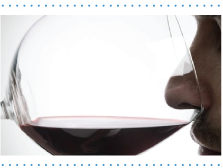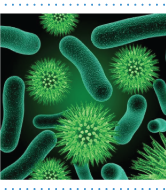|

Content Contributed by Jenny Parker, Imperial Beverage
Screw caps have been associated with cheap wines in the past and have had some serious perception hurdles. However, they are definitely on the rise with many winemakers in the U.S. and abroad. New Zealand is leading the wine industry with the majority of wineries converting from cork to cap. Wineries in Australia, Spain, South Africa, South America, Canada, the U.S. and France are all testing the capping trend as well.
Currently there are three ways to close a bottle of wine: natural cork, synthetic cork and screw caps.
 
NATURAL CORKS
Natural cork closures have a centuries-long heritage; however, they allow for a bottle of wine to be “corked” as the saying goes. A “corked” bottle has a musty smell and taste, and can be a deceiving term in some ways. A "corked" bottle's musty taste has little or nothing to do with the cork itself. Though not true in all cases, this most often stems from the sterilizing compound mixing with bacteria in the bottle or further, the wine as the bottle is filled. The compound that is produed is known as Trichloroanisole (TCA). TCA is an anisole derivative (a chemical compound) that occurs during the sanitization process when and if airborne bacteria or fungi undergo a chemical reaction with chlorinated phenolic cleaning compounds (usually bleach). In other words, TCA is a byproduct of a chemical reaction between cleaning bleaching compounds and bacteria. It is estimated that about 5-10% of wines available on merchants' shelves are “corked”. A majority of the world’s corks are grown and harvested in Portugal.
SYNTHETIC CORKS
Synthetic corks, derived from plastic, appeared to be a viable alternative to traditional corks. However, their track record has been tarnished due to their inability to keep oxidation at bay for any real length of time, significantly decreasing the shelf life of a wine and short-changing the maturing process of select wines. On average they are warranted to prevent oxidation of the wine in the bottle for 2 years.
SCREW CAPS
Screw caps provide the best seal for bottled wines, and eliminate both the “corked” and oxidation problem. New Zealand is the leader in using screw-cap closures for its wines. While screw caps do diminish the drama and romance of bottle opening it is well worth the sacrifice to ensure an untainted wine that offers consistent aging, maintained flavor and freshness with optimum quality control.


Content Contributed by Rob De La Rosa
The situation is common. The wine you have ordered arrives at your table, the bottle is opened, a taste is poured and the wine smells wrong. You are not sure what is behind the malodorous scent, but you are quite sure it smells of moldy attic. You are desperate to send it back, but nervous the "attic" excuse will come off as uninformed and incorrect. Don’t worry because there is a method to decoding wine faults so that no one should have to suffer through the unpleasantness of a flawed wine.
Taste, however, is the most arbitrary dimension of wine and it can be affected by everything from your morning coffee to the waiter’s hand soap. The flavors of a wine, what you taste, are probably not that much different from what the next person might taste. Therefore, below are listed the most encountered faults among all wines. Each one affects different facets of a wine's structure, but all of them take away from the intended experience of the winemaker and the true expression (read: flavor) of the grapes.

TRICHLOROANISOLE ("TCA")
This wine fault is actually the one of the most common. Caused by chlorine-contaminated cork bark or wood, which in turn leads to what we know as "cork taint" or "corked" wines. Affected wines smell of moldy or wet cardboard, musty air, etc., lack fruit intensity on the palate and are destined to grow more intensely foul-smelling as the problem persists.
BRETTANOMYCES ("BRETT")
Caused by the spoilage yeast Brettanomyces, "Brett" - as this fault is most often called - leads affected wines to smell like a host of unpleasant descriptors (barnyard, sweaty saddle, chicken coop and wet dog are some of the more colorful ways it's been characterized). In low concentrations, Brett can be interpreted by some tasters as pleasant, but if it overwhelms, ask to try a different wine as additional bottles of the same wine are likely to be affected.
VOLATILE ACIDITY ("VA")
The result of the overproduction of acetic acid and ethyl acetate in wine, this fairly common wine fault causes its vinous victims to smell of aromas including nail polish remover, vinegar and paint thinner. In its most intense incarnations, wines with excessive VA come across simply as vinegar both in aroma and taste. This can also be a widespread problem among bottles of the same wine, generally if one bottle out of a case shows this then they all will.
OXIDATION
Occasionally described as maderized, this fault occurs in table wines that have been needlessly exposed to oxygen through poor handling or rapid temperature changes (most often heat-related) during their life in the winery or in the bottle. Affected wines will turn brown in color, a defect most apparent in whites, and taste stale, flat or generally lifeless.

MERCAPTANS
Caused by the improper handling of sulphur compounds in the winery, this fault results in wines that smell unappetizingly like skunks or rotten eggs. Easily one of the most unpleasant wine faults in terms of off-scents it produces, mercaptans is thankfully encountered rather infrequently.
CLOUDINESS / HAZINESS
Cloudiness in a wine is a visual flaw that most often does not indicate a serious problem unless the cloudiness is excessive. Unfiltered wines are known for being a bit more opaque than their crystal-clear, filtered cousins, though this is not technically a flaw; if your wine resembles a something seriously murky, however, it could be mycoderma, a yeast-related fault that can affect not only clarity but taste as well.
TARTRATE CRYSTALS
Perhaps the most visually shocking of all wine faults, tartrate crystals resemble tiny shards of glass in the bottom of some white wine bottles - but are in fact harmless. Known to present in wines that have not been cold stabilized (as is often the case with many European whites), tartrate crystals are formed from solidified potassium or calcium (cream of tartar) and present no threat to the flavor of the wine.
HERBACIOUSNESS (“GREEN FLAVORS”)
Not to be confused with herbaciousness as aroma or flavor in a wine. This is an overabundance of methoxypyrozine that produce a cooked green pepper or highly vegetal aroma. It is found predominantly in red wines where early picking or harvesting in wet conditions is commonly practiced.
BUBBLES
Occasionally you will find yourself uncorking a so-called "still wine" that boasts a few or a lot of bubbles in its midst. When seen in young white wines, particularly off-dry versions such as Vinho Verde, Mosel Riesling, etc., this is often intentional, as a touch of CO2 is known to make these wines taste light and refreshing. In an older red, however, bubbles signal an unintentional secondary fermentation in the bottle, and are most definitely a fault.
|
